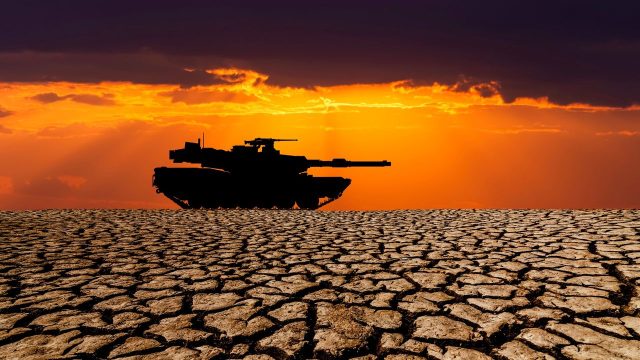
Climate change doesn’t just pose an existential threat to our planet. It’s also ratcheting up national security risks. With increasing food insecurity, resource scarcity and unstable borders, climate change could lead to a rise in political tensions both within the U.S. and between other countries.
How is climate change a security risk?
Climate change increases the world’s instability and thus worsens national security. An unpredictable climate “leads to heightened risks of interpersonal and intergroup violence,” said the World Economic Forum. A one degree Celsius increase in temperature can “increase interpersonal violence by approximately 2%, while intergroup conflict risk increases by 2.5% to 5%.” This is largely attributed to resource loss. With a two-degree increase, “not only will there be continual extreme weather events, but the average climate will have changed so that crops now grown can no longer survive; water shortages will become widespread; and food will be in short supply,” said Kevin Trenberth, a climate scientist at the National Center for Atmospheric Research, at Newsroom.
As a result, there will be climate refugees “exacerbating tensions and regional conflicts that could explode to encompass many countries,” said Trenberth. Climate change “takes things that we were already worried about, like extremism or terrorism, and exacerbates the scale or nature of those threats,” Scott Moore, a practice professor of political science at the University of Pennsylvania, said to Time. “If you have these intensified climate change impacts, they place stress on things like food systems, and worsen already existing tensions within countries.”
The U.S., in particular, faces a “compounding threat when it comes to conflict, disease, migration, poverty,” as well as the “ability of the American military to operate effectively globally,” said Jake Sullivan, former President Joe Biden’s national security adviser, to The New York Times. In addition, playing a “leading role in the innovation and manufacturing of clean energy technologies” is “vital” for the U.S. economy.
What is the government doing about it?
The threat of climate change on national security has been identified on both sides of the U.S. political aisle, at least until recently. It was first acknowledged by President George W. Bush in 1991, and first listed as a threat by the U.S. national security community in 2008. However, in the U.S. intelligence community’s 2025 Annual Threat Assessment, any mention of climate change was noticeably absent for the first time in more than a decade. Instead, they focused on the “most extreme and critical direct threats to our national security,” said Tulsi Gabbard, the Director of National Intelligence, in a Senate Intelligence Committee meeting when questioned about the climate change exclusion.
The Trump administration has been known to deny climate change and curtail programs dedicated to the environment or aid. It has “defunded climate science, shut down USAID, cut billions from foreign aid,” as well as “withdrawn America from the Paris Climate Agreement,” said William S. Becker at The Hill. Unfortunately, failing to acknowledge the threat climate change poses will make the administration’s national security sector “less nimble,” said Mark Nevitt, an associate professor of law at Emory University, to Time. “You can’t just wish climate change away.”
A global problem causing more global problems





